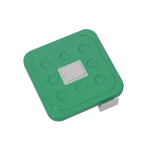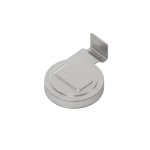In modern electrical systems, the Surge Protective Device (SPD) has become a crucial component for safeguarding both electrical equipment and personnel. With the increasing number and sensitivity of electronic devices, transient overvoltages—commonly referred to as “surges”—caused by lightning strikes, grid switching, or equipment startup are occurring more frequently. If not properly protected against, these surges can cause severe damage to the system.
This article provides an in-depth exploration of SPDs, covering their definition, working principles, classifications, selection criteria, and practical engineering applications to help you fully understand this essential protection device.
What is an SPD?
SPD stands for Surge Protective Device. It can be understood as an “instant grounding device” designed to limit transient overvoltages and divert surge current safely to the ground.
Typically installed in parallel on power systems, signal lines, or communication lines, an SPD activates when sudden spike currents or voltages occur due to external interference. It conducts and diverts the excess energy within milliseconds to prevent damage to other devices in the circuit.
Key functions of an SPD include:
High impedance under normal voltage conditions, allowing normal operation of the circuit;
Rapid transition to low impedance during a surge to conduct the overvoltage to the ground system;
Returning to high impedance after the surge, isolating the protected devices from further interference.
Common Causes of Surges
Induced Lightning: Nearby lightning discharges produce strong electromagnetic fields that induce high voltages in wiring.
Grid Switching or Fault Recovery: Operations such as transformer switching, capacitor switching, or power restoration can cause voltage spikes.
Startup or Shutdown of High-Power Equipment: Devices like motors or welding machines can cause switching surges.
Electrostatic Discharge (ESD): Static electricity released by humans or equipment can create small surges harmful to sensitive components.
How Does an Surge Protective Device Work?
Typical SPD components include:
Metal Oxide Varistors (MOV): Fast response to voltage changes, ideal for high-current scenarios.

Metal Oxide Varistors (MOV)

Symbol of Metal Oxide Varistors (MOV)
Gas Discharge Tubes (GDT): Discharge when voltage exceeds a threshold, suitable for high-energy surges.

Gas Discharge Tubes (GDT)

Symbol of Gas Discharge Tubes (GDT)
Transient Voltage Suppression Diodes (TVS): Best for low-energy, high-frequency protection in signal lines.

Transient Voltage Suppression Diodes (TVS)

Symbol of Transient Voltage Suppression Diodes (TVS)
How it works:
Imagine drawing a virtual safety circle around the devices you want to protect. An SPD should be installed wherever a wire crosses this boundary. This ensures that any surge entering the circle is neutralized before it can affect your equipment.
Under normal conditions, the SPD remains in a high impedance state, conducting no current—essentially like an open circuit. When a transient surge occurs, the SPD instantly switches to a low impedance state, allowing the surge current to be diverted to the ground. It then returns to high impedance, thus isolating the equipment from harm.
Types of SPD
Based on installation position and application, SPDs can be categorized as follows:
Power SPDs are also commonly classified by protection level:
Type 1 SPD (Class B):
Installed at the main distribution board or service entrance, Type 1 SPDs handle direct lightning strikes and high-energy surges. They are the first line of defense in a power system and are designed to withstand high surge currents and quickly divert lightning energy to the ground.
Type 2 SPD (Class C):
Type 2 SPDs are designed to protect against residual surges from indirect lightning or switching operations. Installed in main or sub-distribution boards, they further reduce the overvoltage not eliminated by Type 1 SPDs, keeping the residual voltage within safe limits.
Type 3 SPD (Class D):
Installed near end-user equipment such as sockets or power adapters, Type 3 SPDs protect against low-energy surges caused by internal operations or external fluctuations. These are the final line of defense to ensure sensitive devices are shielded from harm.
Key Selection Criteria for Surge Protective Device
Choosing the right SPD is crucial in engineering design. Key parameters include:
Uc (Maximum Continuous Operating Voltage): The maximum voltage that can be continuously applied to the SPD. It should be slightly higher than the normal system voltage to prevent false triggering.
In (Nominal Discharge Current): The peak value of an 8/20 μs waveform current the SPD can safely handle for 20 times without damage. Select according to lightning exposure and equipment sensitivity.
Iimp (Impulse Current): Defined by the current peak and charge, this is used in Type 1 SPD classification tests.
Up (Voltage Protection Level): The lower the better, to ensure downstream devices are not damaged during a surge.
Modular Design & Thermal Disconnector: Enhances maintenance and safety.
Mounting Method: Should match the distribution panel, such as 35mm DIN rail.
Real-World Applications of SPD
1. Low-Voltage Power Distribution in Buildings:
In commercial buildings, residential complexes, or industrial facilities, low-voltage systems are vital but often exposed to surge threats from the grid, especially during thunderstorms or switching events. To protect lighting systems, air conditioning, elevators, or industrial controllers, install a Type 1 SPD in the main distribution board and Type 2 or 3 SPDs in floor-level or subsystem panels to create a layered protection strategy.
2. Solar Power Plants:
Solar panels are typically installed outdoors, exposed to harsh conditions such as rain, dust, and wind. In areas prone to lightning, unprotected solar systems are vulnerable to frequent, severe damage, leading to costly downtime and revenue loss. Install DC SPDs on the solar array side to protect components and inverters from lightning-induced surges.
3. Data Centers/Server Rooms:
These facilities house high-density electronic equipment requiring stable power and communications. Devices like routers, switches, servers, and storage systems are sensitive to surges and ESD. Surge signals through Ethernet, telephone, or control lines can be especially damaging. Install signal-line SPDs at entry points (RJ45, RS485, phone lines), along with power SPDs at UPS inputs to ensure dual protection and uninterrupted operation.
4. Industrial Automation Systems:
Formerly known as TVSS (Transient Voltage Surge Suppressor), SPDs are essential for industrial automation systems. Designed to limit transient voltages and redirect surge currents, industrial-grade SPDs protect automation controllers, PLCs, sensors, and actuators from power disturbances—ensuring system stability, productivity, and safety.
Installation and maintenance recommendations
1. SPD must be reliably grounded when installed, and the grounding resistance should be less than 10 ohms;
2. keep the cable as short and straight as possible to avoid the formation of loops (common requirement is ≤ 0.5 meters);
3. check the indicator window or remote alarm interface regularly, and replace the damaged module if necessary;
4. use with circuit breakers or fuses to prevent fire when SPD is short-circuited.
Conclusion
With the increasingly complex and high-density development of electrical systems, the importance of surge protectors has become more and more prominent. A well-designed, properly selected and installed SPD system can not only guarantee the long-term stable operation of equipment, but also a necessary investment in the background of lightning and expensive equipment.
If you have more about the surge protector selection, installation or bulk purchasing needs, welcome to contact our technical team, we will provide you with professional solutions and customized services.
Table of Contents
Have you Any Questions?
Can’t find an answer to your question, or want more information about our products? If so, please feel free to get in touch with our professional team. We’re here to help you drive your projects to success.
